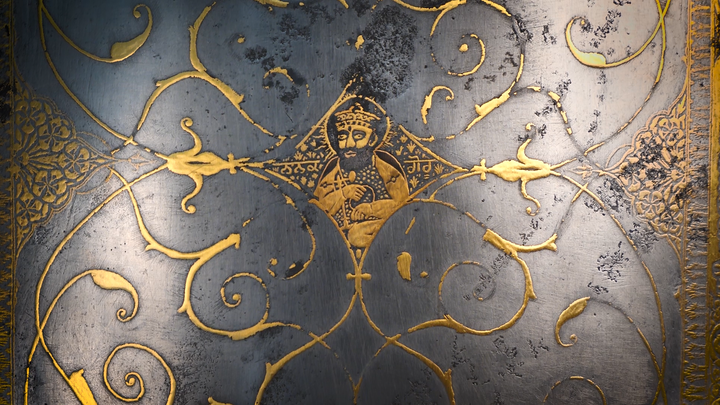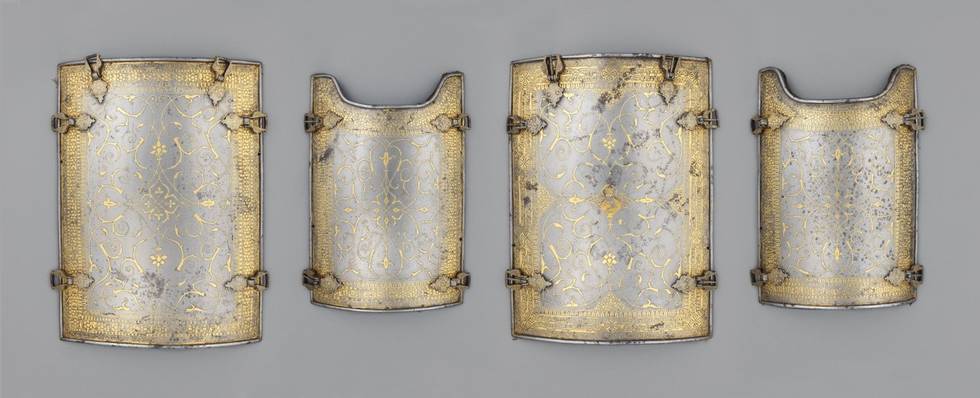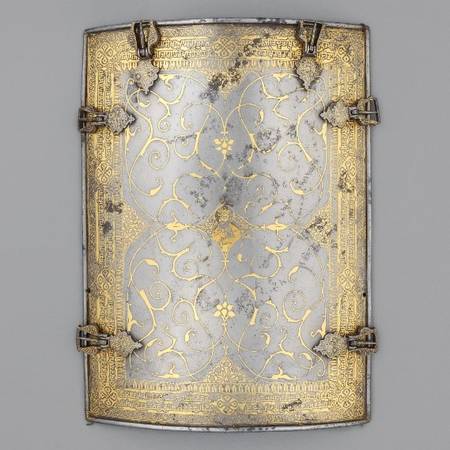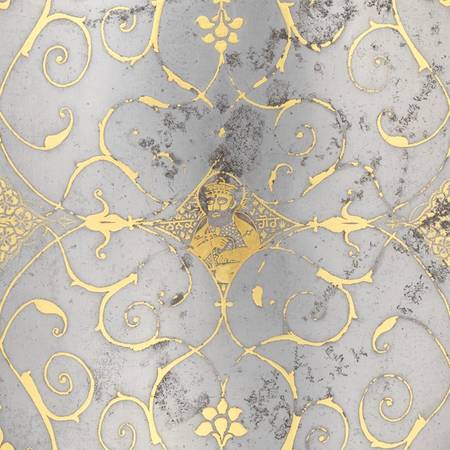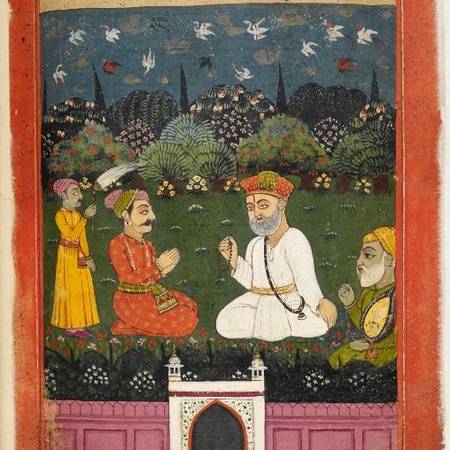Location: Punjab
Date: Late 18th or early 19th century
Materials: Watered steel, iron, gold, brass and velvet
Measurements: Front and back plates 28 x 21 cm; side plates 23.7 x 16 cm
Inv No: OA1500
This armour set is also known as char-a’ina, meaning ‘four mirrors’ in Persian. The four curved plates would together provide protection to the torso against cutting and penetrating injuries and reduce the likelihood of broken bones. Designed to be worn over a mail coat, they would have been held together by leather straps secured to the buckles.
The breastplate bears a portrait in gold of Guru Nanak, the first in a line of ten spiritual teachers of the Sikh faith. He is identifiable both by his appearance and by inscriptions on either side of him, which read ‘nānak gorū’ (ਨਾਨਕ ਗੋਰੂ).
Cuirass bearing a portrait of Guru Nanak
Guru Nanak’s teachings emphasised the Oneness of all beings and the insignificance of religious distinctions. These principles are reflected in 18th and 19th-century portraits, in which he is usually depicted with a combination of religious markers, associated with different communities. Here, he is wearing a prayer cap with upturned flaps (topi) instead of a Sikh turban and has a Hindu mark on his forehead (tilak). He is also carrying an armrest and has a cloak resting over his shoulders, two attributes generally associated with ascetics. The prayer beads in his left hand and the halo around his head identify him as a holy man.
Along the borders of the breastplate are prayers and supplications in Gurmukhi. Literally meaning ‘from the mouth of the Guru’, this script is used to write Punjabi and is contained in the Sikh holy texts. The inscriptions here serve to grant the wearer protection from death and success in the battlefield by appealing to Guru Nanak, Iron, Day, Night, Moon, Sun and the Goddess of War.
Another breastplate bearing a portrait of Guru Nanak was displayed at the Splendeur des Armes Orientales exhibition in 1988 [cat. 239]. In this example, his companion Bhai Mardana is portrayed on the backplate playing the rabab, a musical instrument he used to accompany Guru Nanak’s hymns.
